- Digital Marketing
- Updated 08/19/2025
Growth Marketing Strategies for Software and SaaS Companies
Summarize this post
Many companies jump straight into tactics. They want a content plan, SEO roadmap, email sequences, or ad campaigns. But underneath all of that is a more important question: What growth model will work best for your software company?
Your growth model is the underlying framework that drives your marketing approach, specifically in terms of how people find, evaluate, and adopt your solution. It influences how your team should approach all aspects of marketing, including messaging, channels, tactics, and even the purchasing process of your product.
Choosing the right growth model can be the difference between successfully growing your user base and struggling to attract buyers.
What Is a Growth Model?
A growth model is the primary path your business uses to acquire, convert, and expand customers. Different models emphasize different channels, content types, and buyer expectations. The growth model you choose should match how your buyers want to experience your product or service.
For example, a growth model that’s growing in popularity is Product-Led Growth. I’ll dive into more detail later, but with this model, companies focus on building a self-service approach where free trials do most of the selling and users can upgrade independently when they’re ready to buy.
Let’s look at the most common growth models for B2B software companies.
Product-Led Growth (PLG)
As previously discussed, Product-Led Growth is exactly what it sounds like: letting the product itself drive sales, rather than relying on a sales team. You’re using the product itself to drive interest and adoption by leveraging free trials, freemium plans, and self-serve onboarding.
Users explore the tool independently, often without consulting sales, to determine if it addresses their problems.
Slack, for example, leverages Product-Led Growth by allowing teams to start using it in minutes. Once you hit a usage threshold, you’re prompted to upgrade. Typically, by the time you reach the threshold, the product is already embedded within your organization, making the upgrade to a paid account more likely.
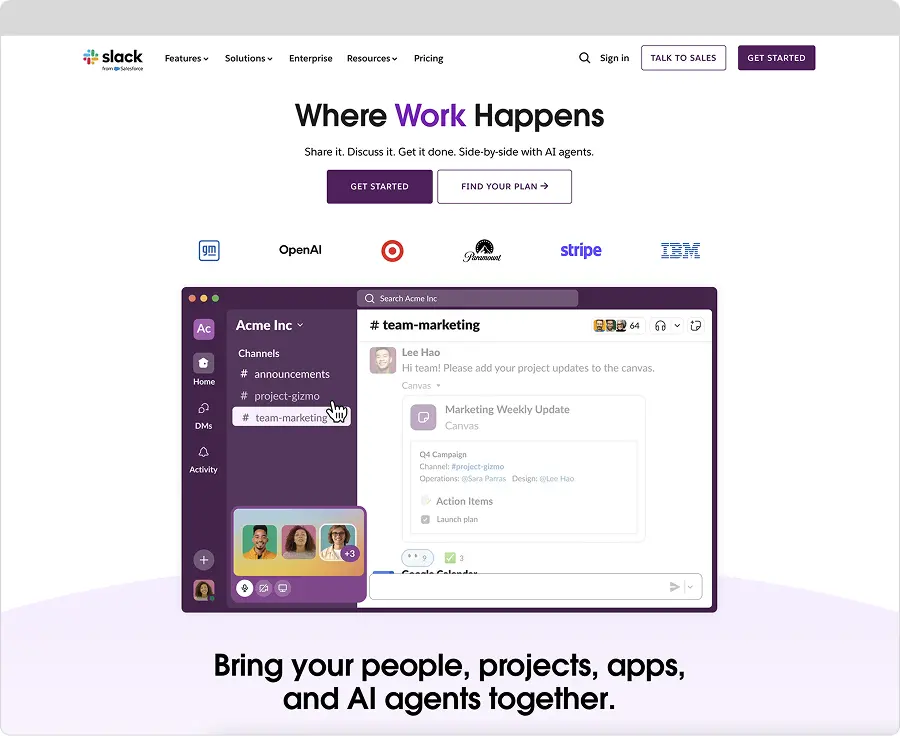
Pros of Product-Led Growth:
- Shortens sales cycles
- Lower customer acquisition cost
- Drives organic growth
Cons of Product-Led Growth:
- Only works if the product delivers value quickly
- Requires strong onboarding and UX
- Not viable for complex or enterprise tools
Simply put, PLG is ideal for products with relatively flat learning curves, offering self-service sales, free tiers, and pricing that enables decision-makers to make purchases independently without involving procurement.
Enterprise software solutions are typically not a great fit, as they tend to be more complex, more expensive, and present greater challenges in setting up self-service onboarding or building free tiers.
Sales-Led Growth (SLG)
Sales-Led Growth (SLG) is nearly opposite to Product-Led Growth and is built on one-to-one conversations. Marketing creates interest. Sales teams qualify leads, run demos, and close deals.
The model intentionally requires sales involvement, and users have no ability to demo or purchase the software independently.
SLG execution heavily relies on CRMs, outbound efforts, live demonstrations, and custom proposals. SAP is a classic example, where buyers expect to speak with a representative who helps them configure the solution to their specific needs and provides a customized quote before making a purchase.
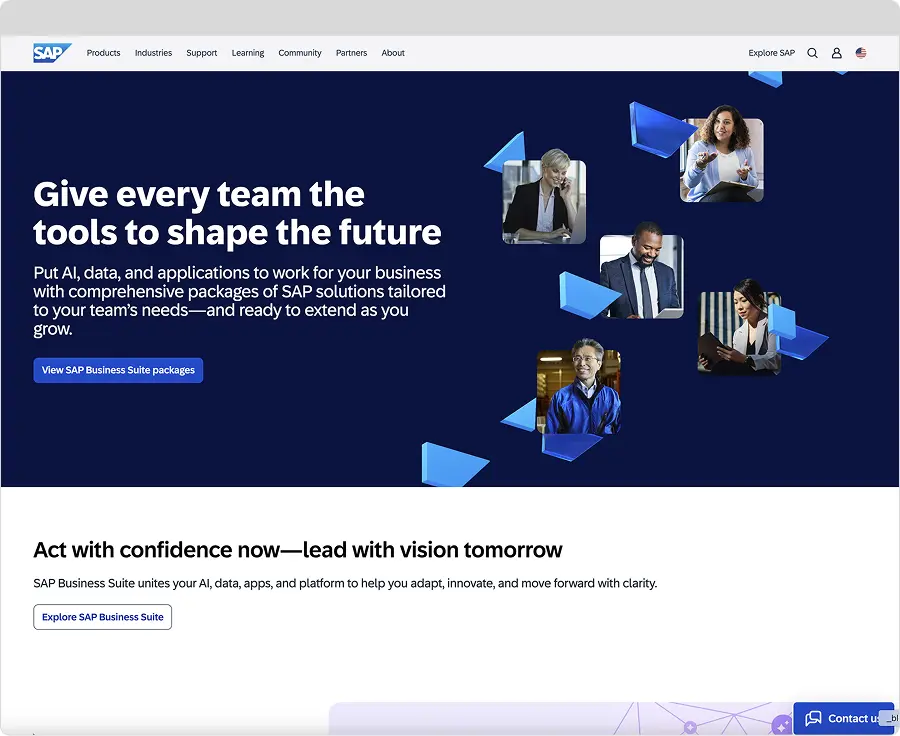
Pros of Sales-Led Growth:
- Better for high-ticket or complex sales
- Easier to handle objections and customization
- Builds relationships early
Cons of Sales-Led Growth:
- Expensive and slower
- Can create friction if buyers want to self-serve
If your software is more expensive, has a steep learning curve, and is highly custom, you’ll likely benefit from a Sales-Led Growth model. Expect to hire a sales team that will focus on both inbound and outbound leads, and establish a marketing function that attracts interested parties and generates sufficient interest to produce sales-qualified leads.
Marketing-Led Growth (MLG)
Marketing-Led Growth can include self-service purchase or involve a sales team. This growth model differs in that it focuses primarily on inbound marketing. Content, ads, SEO, LLMs, and social media attract people to the site. Forms capture leads. Marketing nurtures them with targeted emails and valuable resources.
MLG-focused teams have larger marketing teams and a group of sales specialists to answer questions and handle larger accounts.
A good example is HubSpot, which publishes educational content to attract leads and then utilizes automation to guide them through the buyer’s journey. Asana, a project management SaaS, publishes general business content, such as “What is Scope Creep,” to build top-of-the-funnel awareness. This way, when prospects are considering switching project management platforms, they already know, like, and trust Asana.
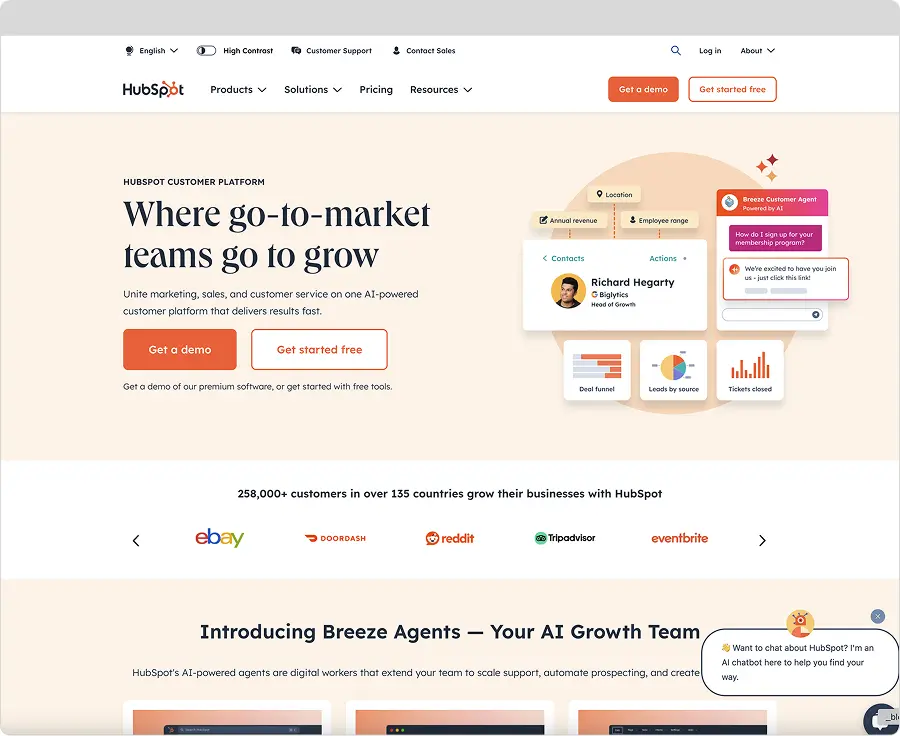
Pros of Marketing-Led Growth:
- Scales well
- Helps educate the market
- Builds long-term visibility
Cons of Marketing-Led Growth:
- Takes time to gain traction
- Hard to tie top-of-funnel to revenue
- May need sales support to close
Marketing-Led Growth is a good fit for brands that have ample subject matter expertise and target an audience that consumes large amounts of online content related to the problems they’re trying to solve.
Community-Led Growth (CLG)
Community-Led Growth focuses on building an engaged user base that acts as evangelists, helping to support, educate, extend, and promote the product.
CLG requires building a community team that focuses on nurturing and growing evangelists. The community team will typically identify high-visibility users who are already vocal about the platform and engage with them to encourage continued outreach and participation in a forum, user group, or by creating more content around the product.
You may establish your own forum and encourage users to join and participate, or cultivate and support the community where they’re already engaging, such as Reddit, Discord, or other social platforms.
Community-led growth often includes events, ambassador programs, and directly involving prominent community members in marketing efforts.
Notion is a recent example of successful Community-Led Growth. Their online community shares templates, creates YouTube tutorials, solves problems, and spreads the word. Notion does minimal direct marketing and advertising, and most of its growth has resulted from its community.
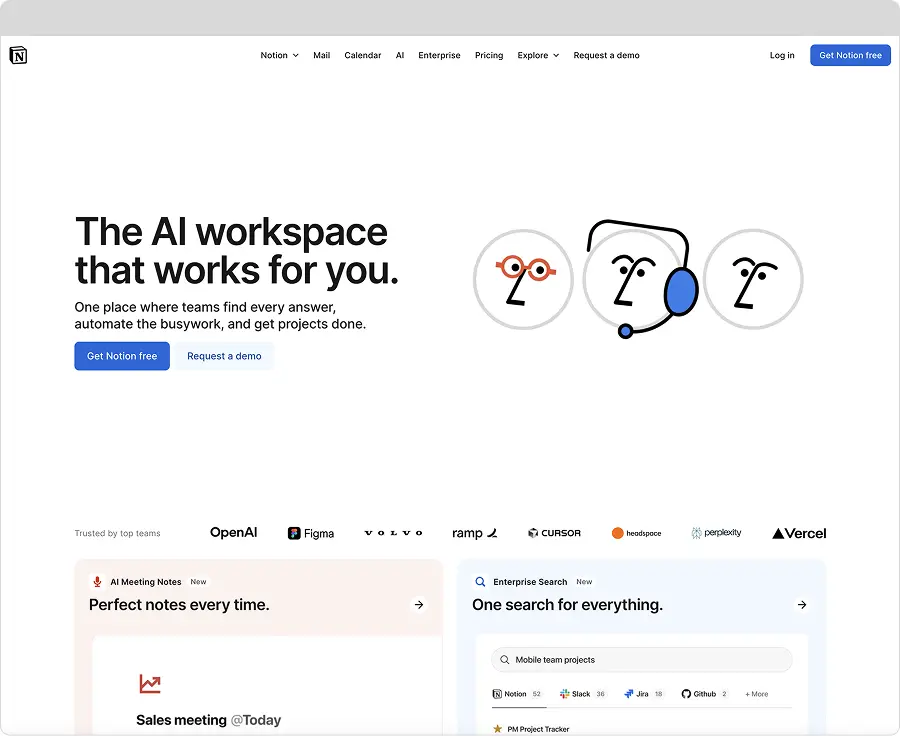
Pros of Community-Led Growth
- Builds loyalty and retention
- Creates ongoing content and support
- Reduces reliance on ads or outbound
Cons of Community-Led Growth
- Takes time to build
- Harder to measure and control
- Needs active moderation and engagement
In my experience, Community-Led Growth is most effective when you have a platform that users can build upon (like Notion.) Extendable platforms give end-users ownership by allowing them to build and share their own solutions, which creates an incentive for them to help grow the platform (if the product goes away, so does all their effort.)
WordPress, while an open-source project, is another classic example of CLG. WordPress’s growth can be directly attributed to the tens of thousands of add-ons, plugins, events, and other services and solutions created by the community. Each person who builds on top of WordPress has ownership in the project and an incentive to ensure its continued success.
Partner-Led Growth
Partner-Led Growth leverages third parties to promote or sell your product. Execution includes affiliate and partner programs, co-branded materials, channel partners, training, and revenue sharing.
Shopify generates a significant portion of its sales through Shopify partners who sign up clients who need e-commerce but haven’t specifically selected a platform.
HubSpot has a similar model with their agency partners. They provide training, education, and sales support to implementation partners and then share a portion of the sales generated by these partners.
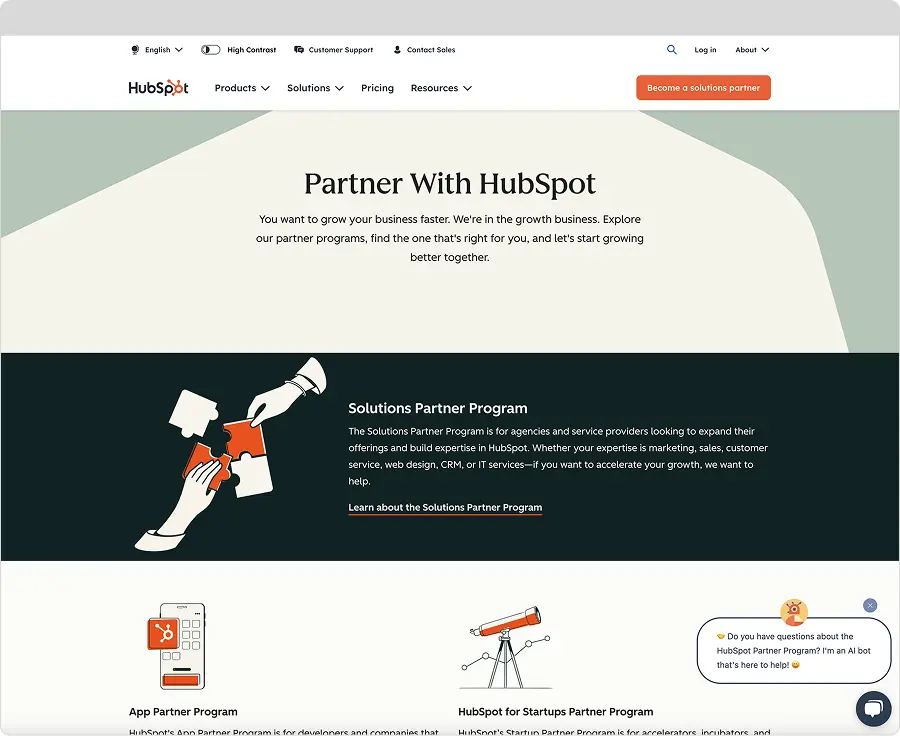
Pros of Partner-Led Growth:
- Expands reach without direct acquisition costs
- Leverages existing trust of partners
- Scales in new markets quickly
Cons of Partner-Led Growth:
- Relies on external motivation
- Less control over the sales process
- Requires good partner enablement
Partner-Led Growth is ideal for complex solutions that benefit from expert implementation. HubSpot, Shopify, Monday.com, Salesforce, etc., are all extremely powerful and flexible platforms. Consequently, most businesses that want to use them don’t want to hire an in-house expert to set up and manage them.
This creates the need for a partner ecosystem where providers develop expertise on implementation and provide ongoing support. The platforms further incentivize the ecosystem by creating partner programs to offer implementers additional revenue and resources to sell the platforms themselves.
Ecosystem-Led Growth
Ecosystem-led growth leverages visibility within a larger system by integrating with already popular tools. You gain visibility by showing up in app directories, being featured by the integrating tools, and being promoted within the tools community.
This was one of the strategies we adopted when marketing Project Panorama, a WordPress-based project management add-on. Not only did we leverage visibility within the WordPress.org plugin directory, but we also intentionally developed free integrations with other popular WordPress plugins like Gravity Forms, WooCommerce, BuddyPress, and more.
For more examples, look at the Basecamp integration directory. There are dozens of tools that integrate with Basecamp, so when users look for ways to extend their project management platform, they discover new tools and options they might not have found otherwise.
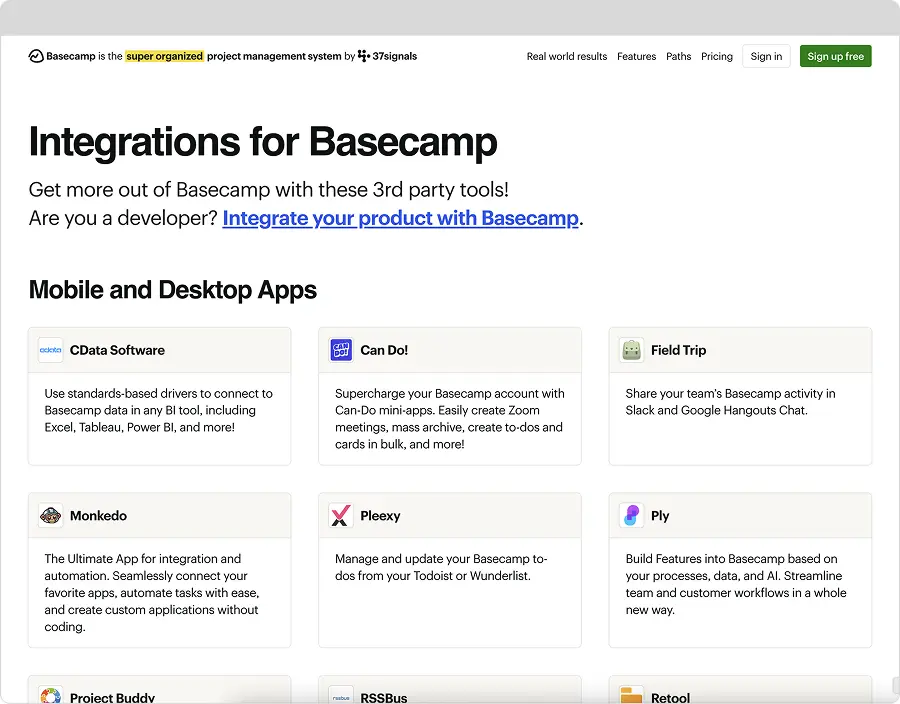
Pros of Ecosystem-Led Growth
- Immediate visibility through integrations
- Can drive high-intent traffic
- Differentiates through compatibility
Cons of Ecosystem-Led Growth:
- Can become a commodity in large ecosystems
- Platform risk if dependencies shift
- Limited control over traffic and experience
Choosing the Right Growth Model
There is no best model. It depends on what is feasible and what your audience expects.
PLG only works if your product can be experienced without support. That means you need strong UX, instant value, and the ability to trial or demo features independently. If your users expect a guided experience, PLG may be frustrating for them.
In cases where PLG is not feasible, you can consider other models as strategic levers. If your competitor is winning on PLG, consider differentiating yourself with a community. If you’re not in a marketplace, consider building strong partnerships.
The key is to understand your audience. What do they expect when evaluating a product like yours? How do they want to learn about it? What resources do they have available?
Let the Growth Model Shape the Strategy
Once you’ve selected your growth model, you can build a strategy that supports it. If you’re PLG, focus on onboarding UX, tooltips, and pricing transparency. If you’re sales-led, invest in enablement, battlecards, and sales content. If you’re community-led, your marketing should support discussion, connection, and shared ownership.
A marketing strategy only works if it aligns with how people want to make a purchase and leverages the strengths of your tool and the broader ecosystem. Choosing a growth model gives you that clarity.
Start there. Then build everything else around it.